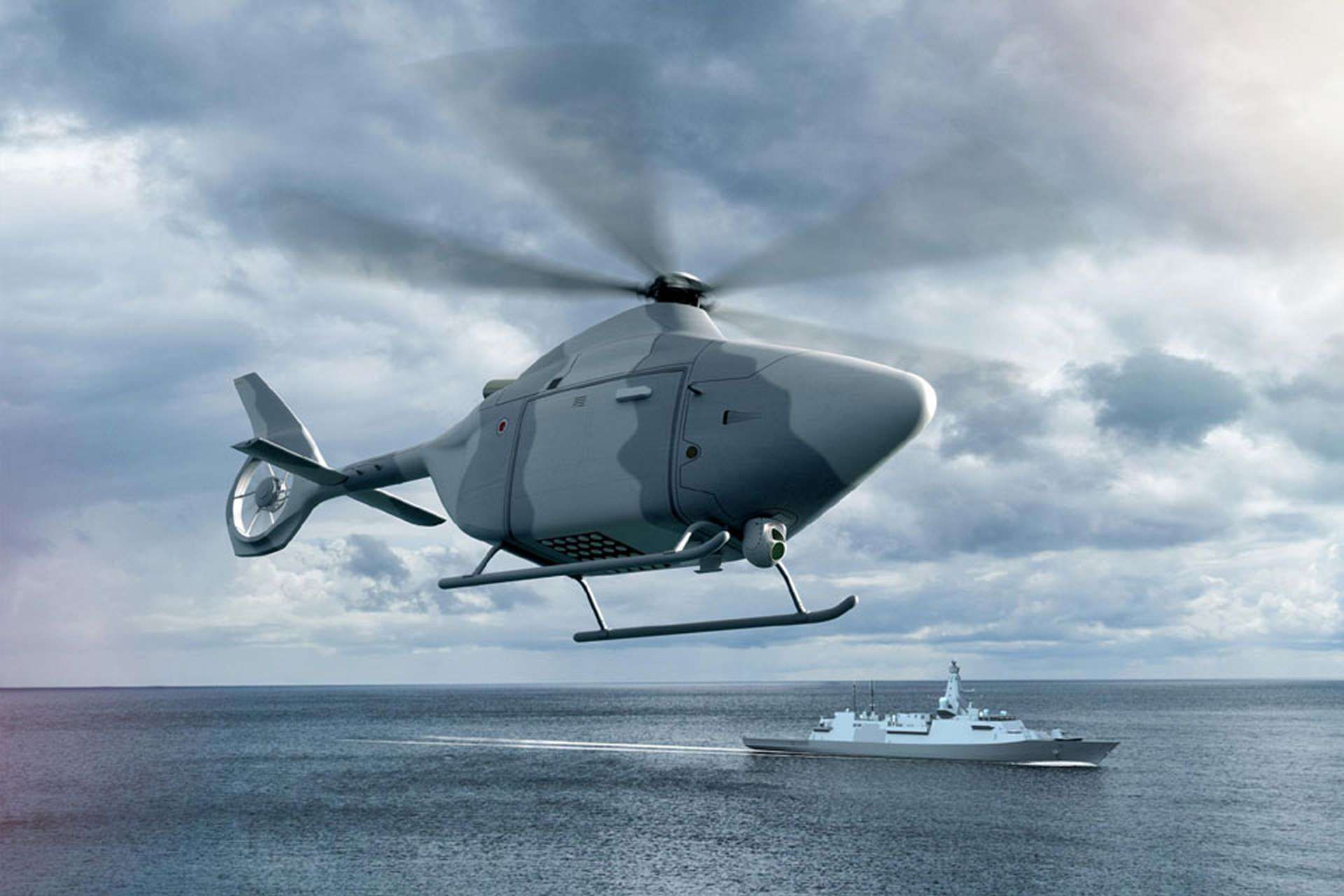Breaking News
Proteus: Leonardo's Revolutionary Uncrewed Rotorcraft for Maritime Missions.
According to a PR published by Leonardo on January 7, 2025, the company has revealed the design of its groundbreaking Proteus Uncrewed Rotorcraft Technology Demonstrator, developed in partnership with the Royal Navy and the UK Ministry of Defence’s Defence Equipment and Support (DE&S) Future Capability Innovation (FCI) team.
Follow Army Recognition on Google News at this link

Artist rendering of the Proteus Uncrewed Rotorcraft. (Picture source: Leonardo)
Its modular payload bay is a central feature, allowing for mission-specific configurations. This flexibility enables operators to trade fuel capacity for additional mission payloads, broadening its scope across roles such as anti-submarine warfare and maritime reconnaissance. By offering an aircraft type capable of multiple missions, Proteus reduces the logistical burden and costs associated with maintaining diverse fleets.
Leonardo has integrated advanced digital tools to streamline Proteus’s development. A digital twin—an exact virtual replica of the rotorcraft—facilitates synthetic testing, enabling the rapid iteration of designs and systems without requiring live prototypes. Coupled with the use of Artificial Intelligence (AI) and Machine Learning (ML) algorithms, this approach accelerates the refinement of autonomous flight control laws and mission capabilities, while significantly cutting development costs.
The design leverages advanced composite materials, with over 40 components manufactured using these techniques. Incorporating additive manufacturing, such as 3D printing, and low-temperature cure composites has reduced production complexity.
Technical comparison with Peregrine RWUAS
The Leonardo Proteus and Peregrine Rotary Wing Uncrewed Aircraft Systems (RWUAS) represent two distinct approaches to advancing the Royal Navy’s aerial capabilities.
The Peregrine, based on the Schiebel S-100 Camcopter platform, provides a more compact and agile solution. Designed for immediate operational use, it integrates advanced sensors such as the Thales I-Master radar, which offers high-resolution synthetic aperture radar (SAR) imagery and maritime moving target indication (MMTI) capabilities.
Peregrine operates alongside crewed helicopters like the Wildcat, delivering complementary reconnaissance and surveillance functions. Its smaller size and agility make it ideal for tactical operations, with capabilities such as real-time data integration into a ship’s combat management system.
Proteus benefits from digital development tools, including a digital twin that accelerates system refinement through synthetic testing, while Peregrine relies on proven technology adapted for maritime use.


























